I was looking for a project to get used to using CircuitPython for my tinkering. I decided to build an IR camera with AMG8833 sensor, which I recently bought for testing. For a display I went with 8x8 NeoPixel grid, which is an obvious choice when you take into account that sensor measures temperatures in 8x8 grid as well. As for the brain I chose Adafruit ItsyBitsy M4 Express, but I will also want to check if a board with M0 microcontroller will be sufficient for this task.
I don't have any real use for this device, although I can imagine it can be used for example to look for thermal leaks. To wet the appetite I hacked together test circuit on a breadboard and wrote some code, which does not behave as I expected. But for a start it's more than enough. Main project photo presents my selfie: three red(-ish) pixels in the middle are my face and remaining few at the bottom are my hands (with phone in right one).
Project goals:
1. Build a battery powered IR camera with LED matrix display using microcontroller supported by CircuitPython.
2. Write software to map temperatures to RGB colour values.
3. Test how capable are SAMD51 and SAMD21 microcontrollers in running CircuitPython programs with quite a lot of calculations.
4. Design and 3D print enclosure.
 Szaja
Szaja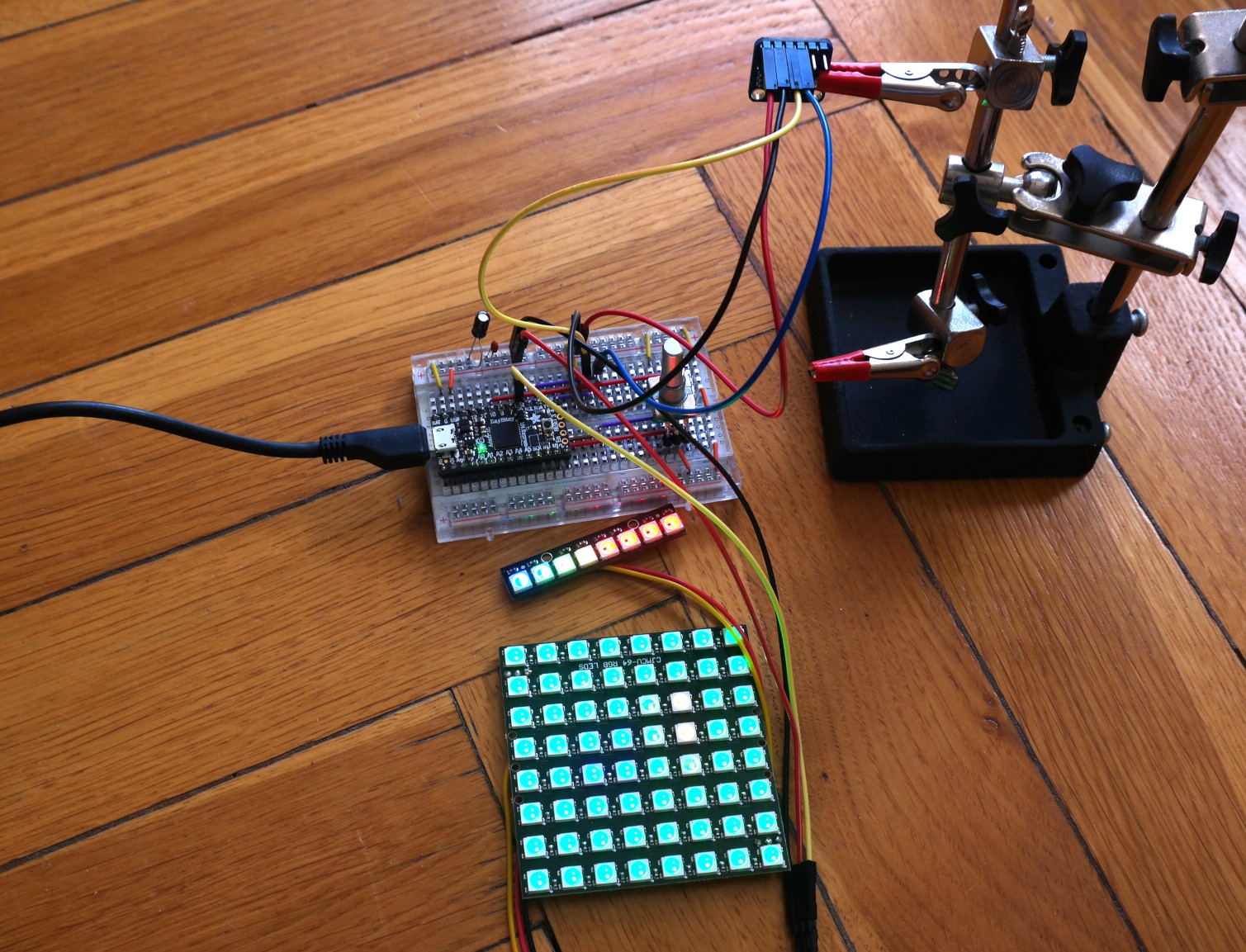
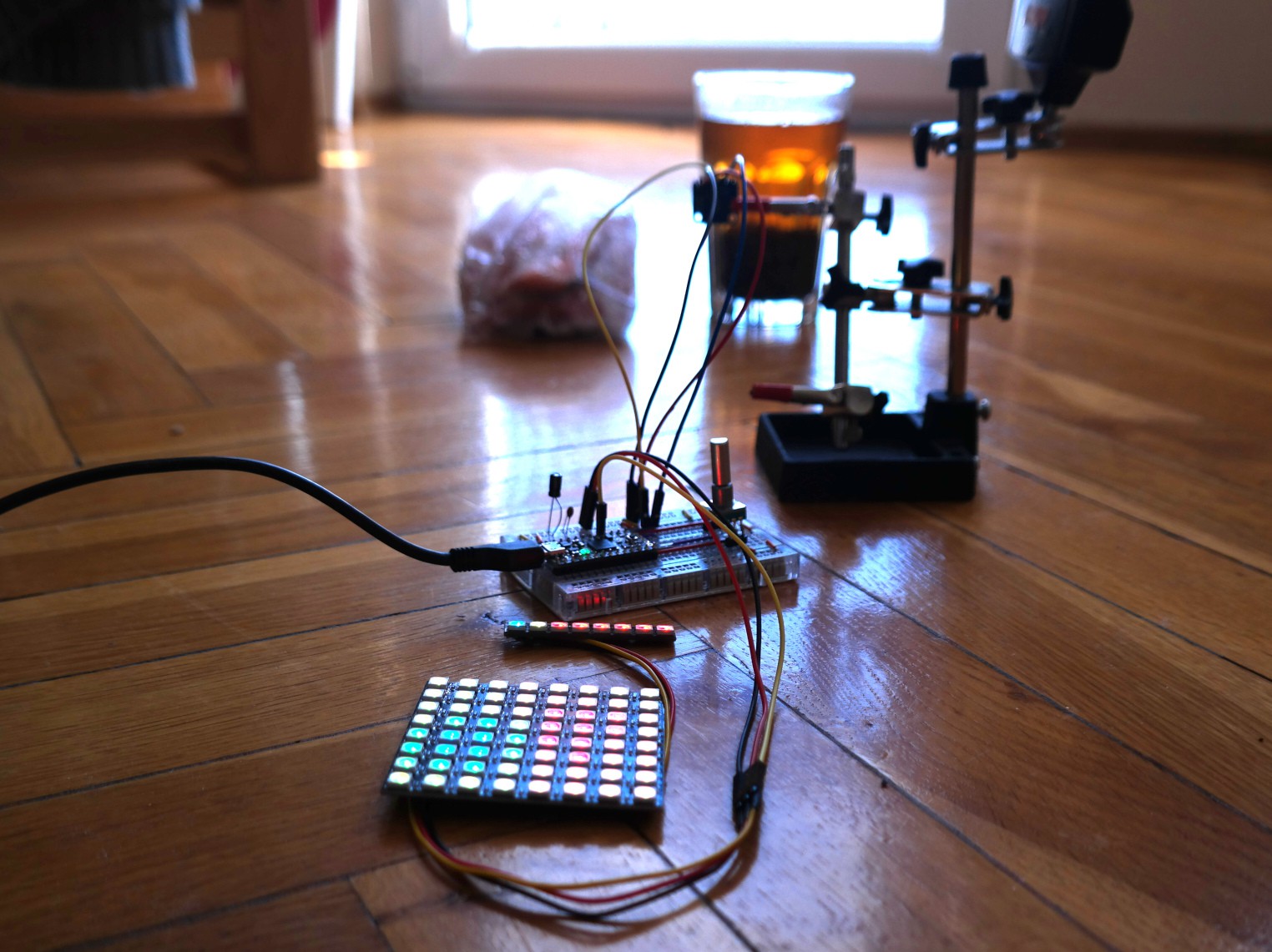
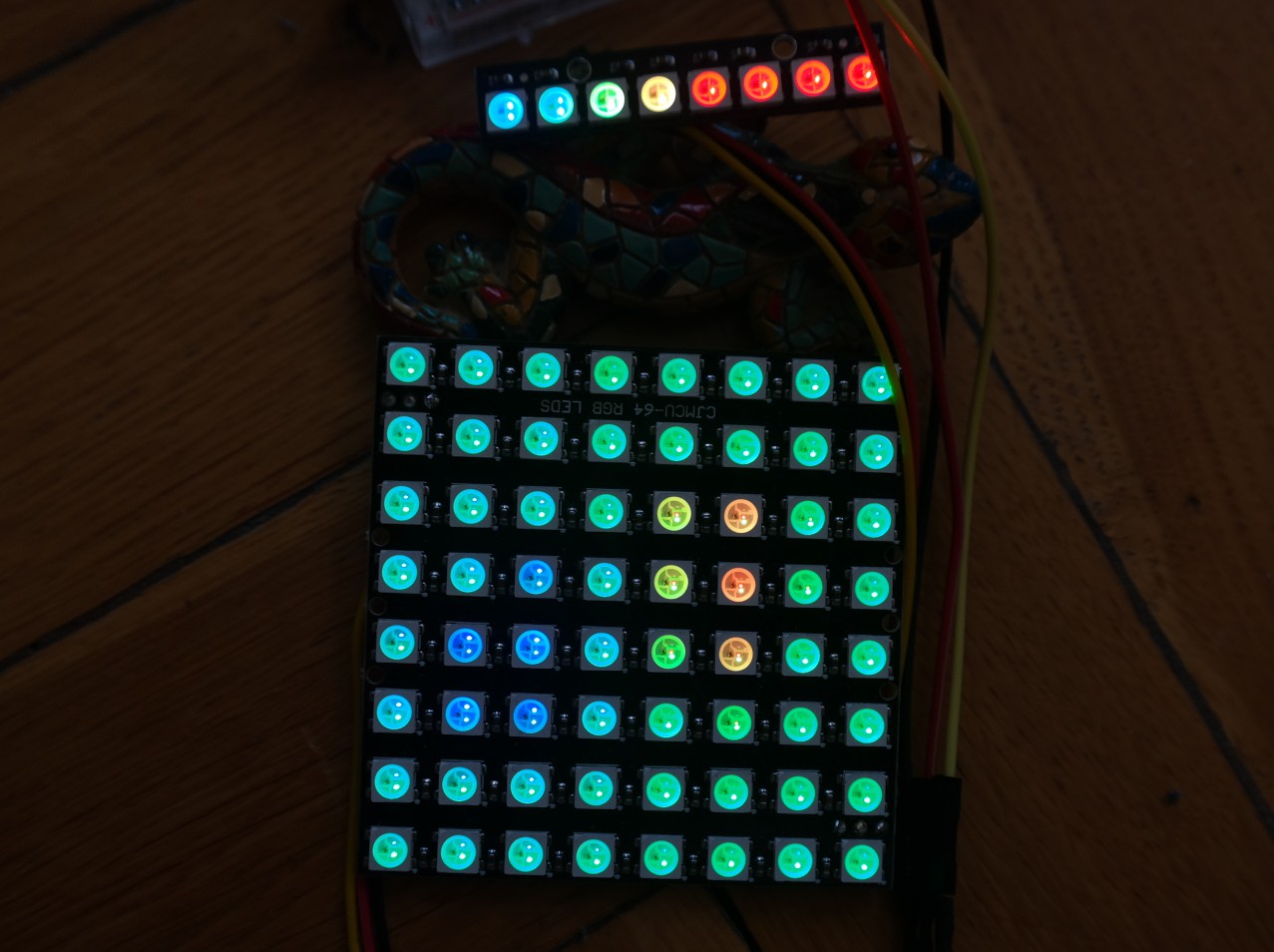 You set the temperature map by rotating the encoder. Basically it moves the temperature which is shown as a full red (RGB 255, 0, 0). In this case it's 50 deg C, as 5th LED (counting from the left) at the line at the top is full red. Full blue (RGB 0, 0, 255) is always 0 deg. C and it's not shown, 1st LED is for 10 deg. C. So you can estimate, that the meat is really frozen (0 deg. C or below, as they are flattened), and the tea is somewhere between 40 and 50 deg. C. It works!
You set the temperature map by rotating the encoder. Basically it moves the temperature which is shown as a full red (RGB 255, 0, 0). In this case it's 50 deg C, as 5th LED (counting from the left) at the line at the top is full red. Full blue (RGB 0, 0, 255) is always 0 deg. C and it's not shown, 1st LED is for 10 deg. C. So you can estimate, that the meat is really frozen (0 deg. C or below, as they are flattened), and the tea is somewhere between 40 and 50 deg. C. It works!
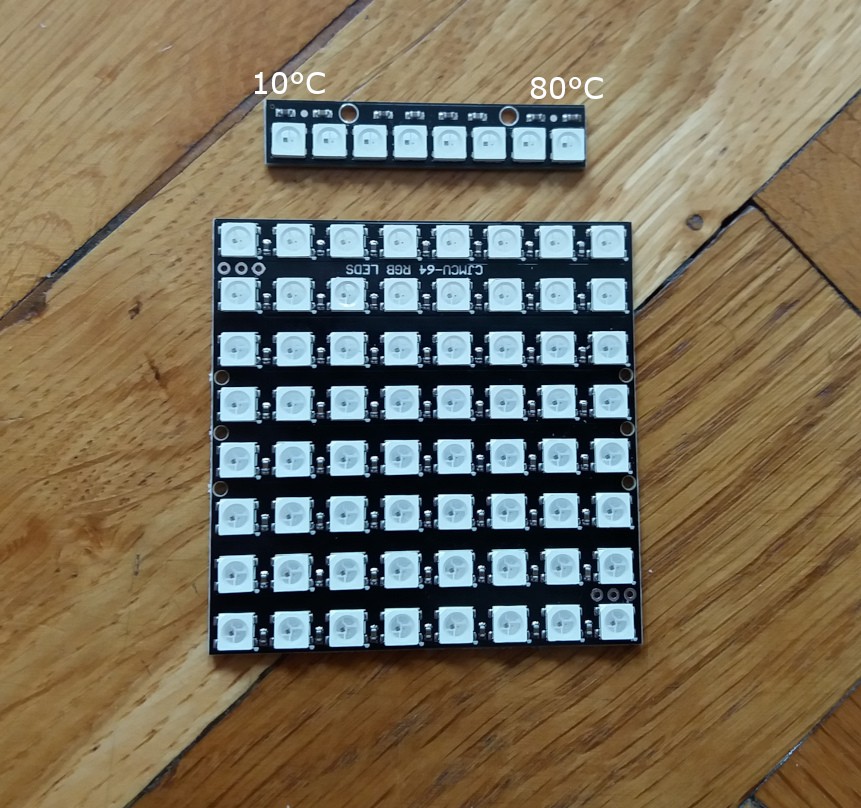

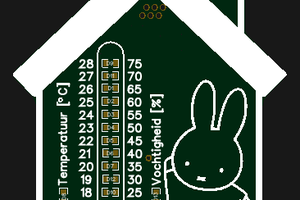
 Christoph Tack
Christoph Tack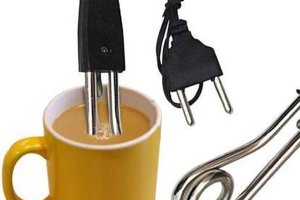
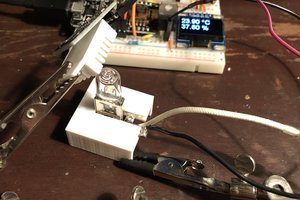
 albert
albert
 oakkar7
oakkar7